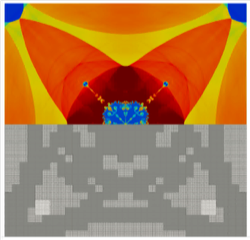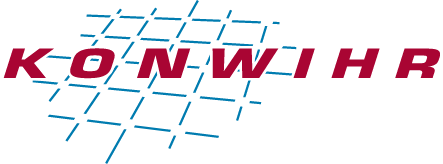Applicant
Prof. Dr. N. Adams
Institute of Aerodynamics and Fluid Mechanics
TU München
Project Summary

The Chair of Aerodynamics and Fluid Mechanics of the Technical University of Munich is developing ALPACA (Adaptive Level-Set PArallel Code Alpaca) since 2016, which offers one of the most advanced and versatile simulation environments for laboratory simulations of complex multi-material fluid flows. Originally funded by the ERC Advanced Grant NANOSHOCK (Grant No. 667483), ALPACA is capable of simulating compressible fluid phase interactions with discontinuities like shocks and has been applied to a broad range of applications ever since. ALPACA utilizes multiresolution compression in combination with high-resolution numerical schemes at vanishing numerical dissipation.
Solving the inviscid and per se unstable Euler equations is subject to new challenges due to the fact that numerical dissipation no longer suppresses the effect of floating point inaccuracies. In our research, we noticed a significant impact on the outcome of simulations, especially when studying symmetric problem descriptions. For exemplary test cases, we can demonstrate that the symmetry-breaking property is not a physical effect that is now observable due to the fact of more accurate numerical procedures, but the result of numerical inaccuracies due to limitations in the floating point representation that are no longer hidden by numerical dissipation. Note, the former interpretation is still today sometimes found in literature.
With the support of the KONWIHR funding, we have established a robust algorithmic procedure to ensure symmetry in all relevant flux calculations up to machine precision. Previously, few canonical two-dimensional examples demonstrated efficacy of our proposed symmetry-preserving techniques. The generalized flow solver now provides the capabilities for reproducible benchmark simulations to serve as reference for future numerical developments. We have established a fully automated test-suite environment to ensure validity of all solver details. Furthermore, coding principles following the test-driven development paradigm have been enforced yielding currently a unit-test coverage of 60%. Furthermore, data acquisition using the HDF5 format was improved in terms of efficiency and correctness. More precise, collocating data points between parallel written blocks of data were removed to avoid postprocessing artefacts in ParaView.


